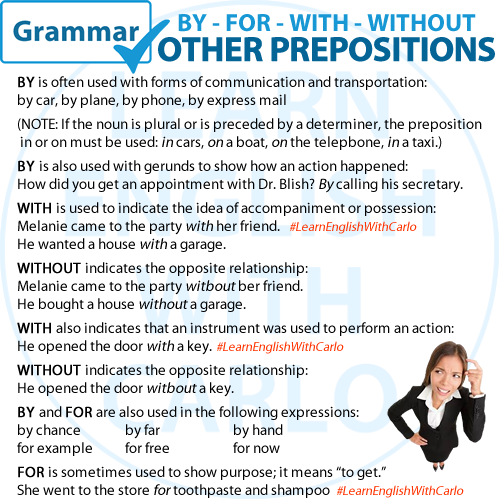
By is often used with forms of communication and transportation:
by car, by plane, by phone, by express mail (‘Note: If the noun is plural or is preceded by a determiner, the preposition in or on must be used: in cars, on a boat, on tbe telepbone, in a taxi.) By is also used with gerunds to show how an action happened:
How did you get an appointment with Dr. Blish? By calling his secretary.
With is used to indicate the idea of accompaniment or possession:
Melanie came to the party with her friend.
He wanted a house with a garage.
Without indicates the opposite relationship:
Melanie came to the party without her friend.
He bought a house without a garage.
With also indicates that an instrument was used to perform an action:
He opened the door with a key.
Without indicates the opposite relationship:
He opened the door without a key.
By and for are also used in the following expressions:
by chance; by far; by hand.
for example; for free; for now
for is sometimes used to show purpose; it means “to get.”
She went to the store for toothpaste and shampoo
